When you started gardening, you probably had dreams about all the different plants you’d grow. You imagined heaping piles of tomatoes, cucumbers to make more pickles than you could eat in one winter, and a never-ending supply of bright red bell peppers. If you have a greenhouse, all those dreams can be possible, even if you live in a cooler environment.
Growing plants in a greenhouse allows gardeners to have more control over the environment where their plants are growing. It also allows gardeners to extend their growing season or grow a variety of greenhouse plants in a place where traditional farming couldn’t happen.
This sustainable method of farming is productive and eco-friendly. Read on to learn more about some of the best greenhouse plants to grow in your backyard.
Lettuce

Lettuce is one of the most commonly grown greenhouse plants. In fact, much of the lettuce that is produced and sold now is grown in greenhouses. Lettuce prefers to grow in cooler temperatures. You may think all greenhouses are hot inside, but that’s not the case.
Related Post: Growing Lettuce
When growing crops like lettuce, the greenhouse is cooled to keep the lettuce from bolting. Lettuce has a quick turnover in greenhouses with some varieties reaching harvest weight in as little as six weeks. Try loose leaf varieties like Bibb, Butterhead, Oakleaf, or Salanova.
Tomatoes
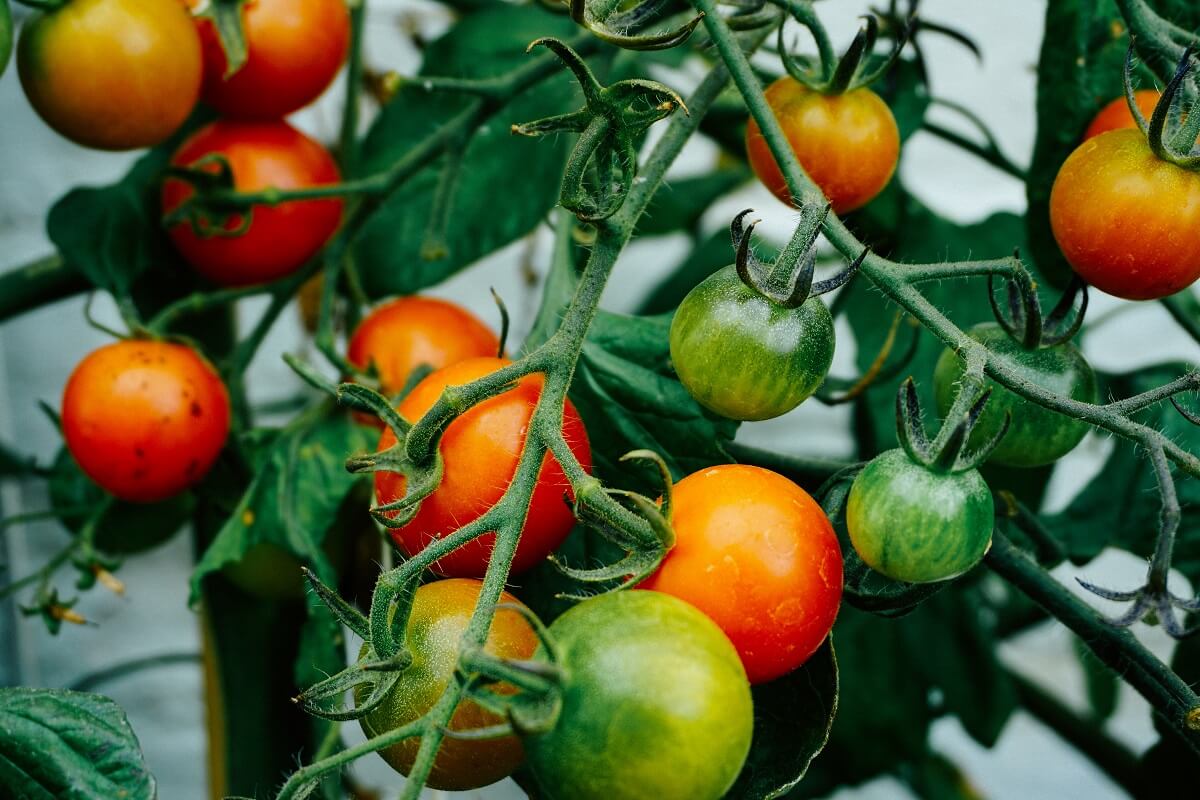
Tomatoes are what most people think of when you mention growing in greenhouses. Hot house tomatoes were developed decades ago and often lacked in flavor and texture. Unfortunately, these grainy, flavorless tomatoes put a bad reputation out there for greenhouse-grown tomatoes. The tomatoes grown in greenhouses today are far superior.
Related Post: Growing Tomatoes
Tomato plants grown in greenhouses are extremely prolific and can yield outstanding amounts of fruit. Many tomato plants grow so well in greenhouses that they actually vine out and reach lengths of 30 feet or more. Almost any tomato variety will grow well in greenhouses, but some solid choices are the Beefsteak, Geronimo, Rebelski, and Celebrity.
Cucumbers
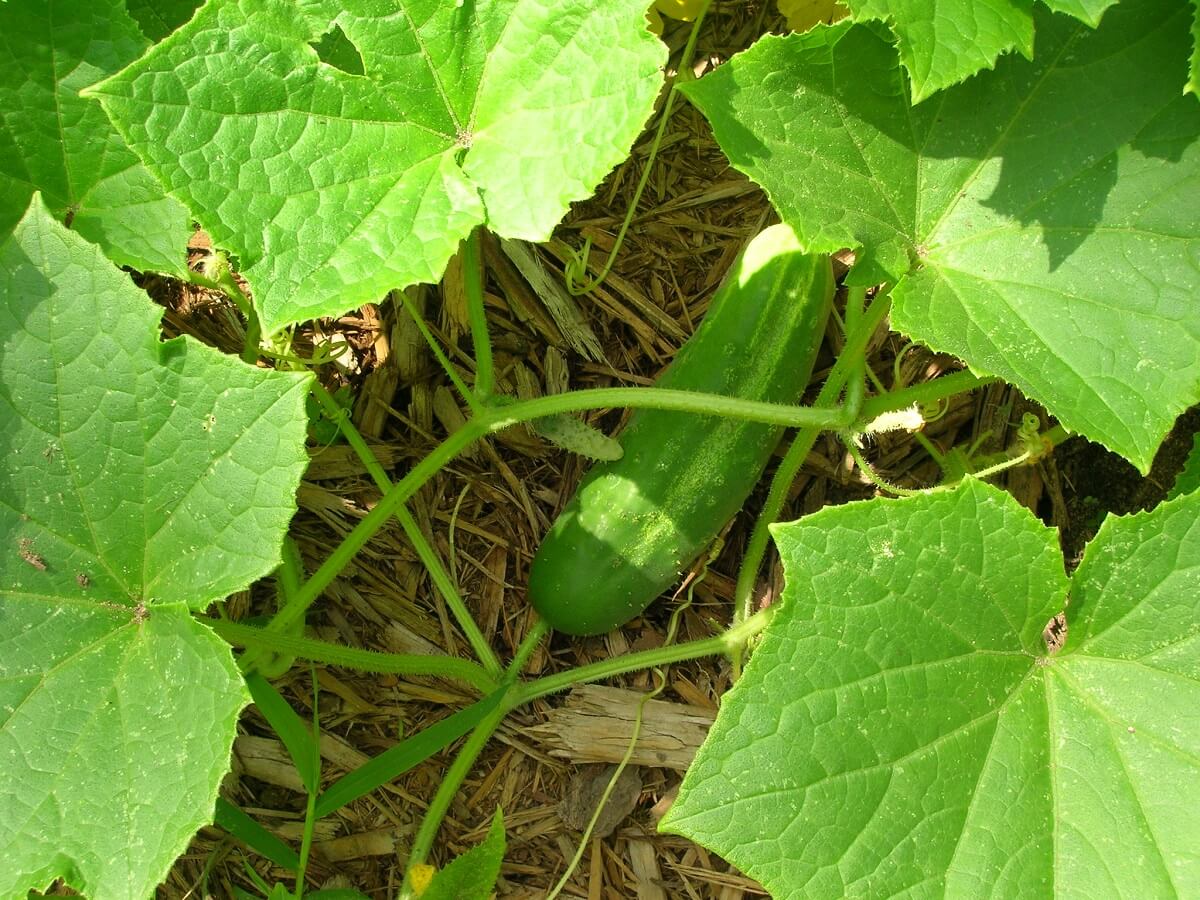
Cucumbers are another popular crop for growing in greenhouses. Cucumbers are heavy feeders and can quickly suck nutrients out of soil. Growing them in hydroponic systems allows growers to supply the nutrients they need without nutrient depletion. Most people are aware that cucumbers are vining plants, but you haven’t seen a vining cucumber until you’ve seen one grown in a greenhouse.
Cucumbers will make extremely long vines, requiring a trellis system. These long vines are usually draped with cucumbers. The yield from cucumbers grown in greenhouses will make a good yield from a field-grown crop shrivel in comparison. Almost any cucumber will excel in greenhouses, but the most popular choices include Gherkin, Nokya, Tyria, and Picolino cultivars.
Peppers

It’s true that pepper plants love heat which makes them an excellent choice to grow in a standard greenhouse. Many field-grown peppers aren’t productive or die back because they aren’t getting enough water or nutrients. Pepper plants are excellent choices for hydroponic systems in greenhouses. You’ll be able to provide them with all the water they need and ample nutrients.
Related Post: Growing Peppers
Bell peppers are good greenhouse crops, although any type of pepper performs well in a greenhouse. Anaheims, jalapenos, bell peppers, poblanos, and hot peppers can all be grown in a greenhouse. For fun and funky bell peppers, try the Lilo, Sprinter, or Milena cultivars.
Herbs
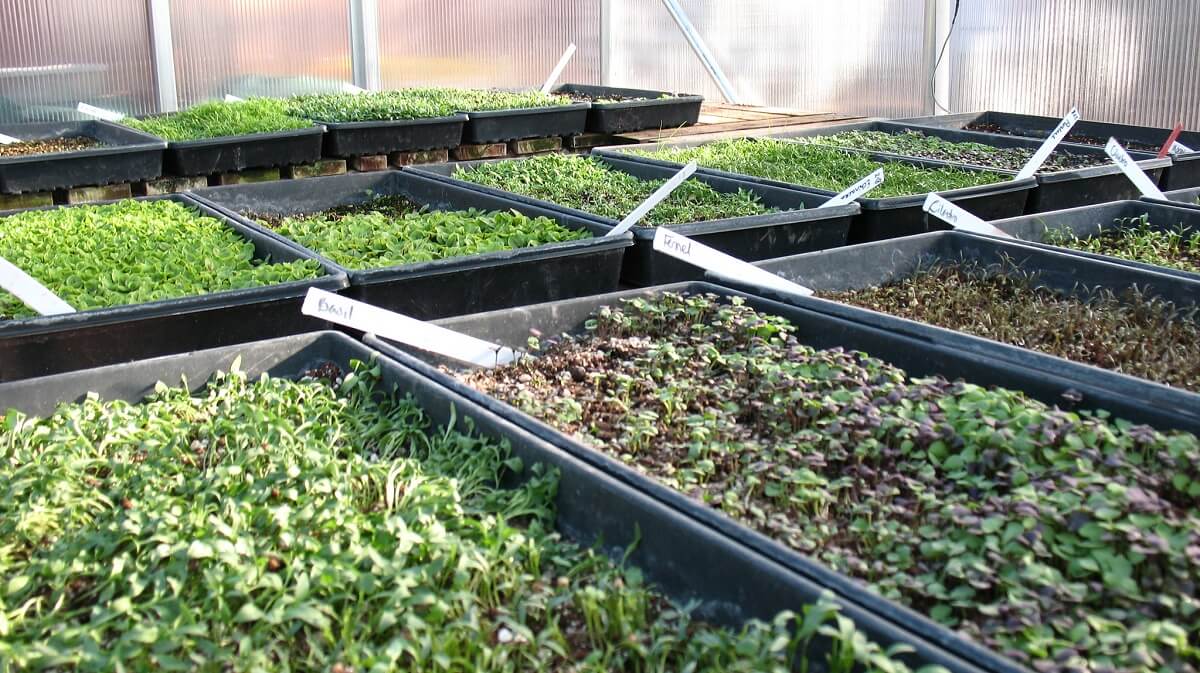
All leafy greens can be grown exceptionally well in a greenhouse, and that includes herbs. Herbs that are grown in a greenhouse are often cleaner and require less preparation than field-grown herbs because many of them are grown in hydroponic systems. No more washing dirt from herb leaves after watering!
Another benefit of growing herbs is they don’t take up much space, so you can grow your favorite herbs along with other crops. The types of herbs available to grow from seeds are nearly endless, and it can be difficult to choose the best ones for growing in a greenhouse.
For commercial sales, or for use yourself, it’s best to stick with the basics. Avoid buying the purple basil that can make your fresh pesto unappealing. Basil is an extremely popular choice for growing in a greenhouse, but you can also grow cilantro, parsley, chives, and other herbs just as easily.
Microgreens
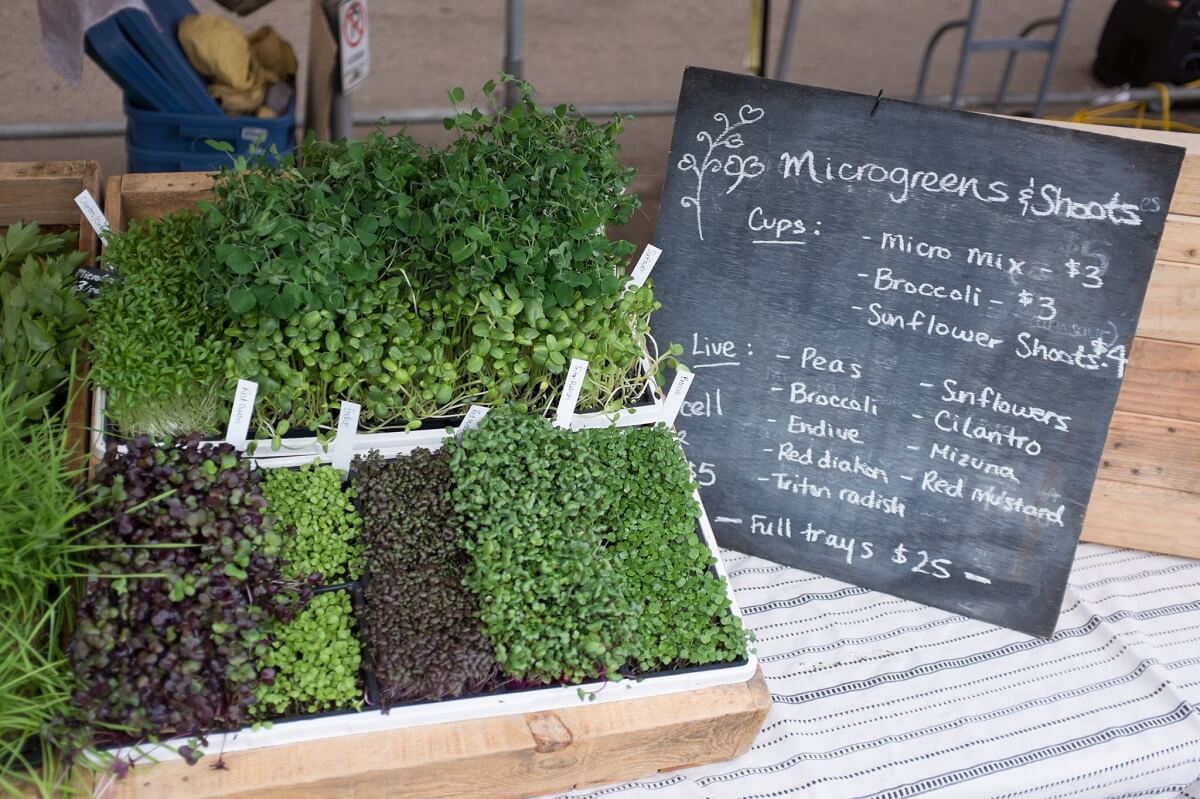
Microgreens are leafy greens that are harvested at a very young age, often at the first true leaf or cotyledon stage. These minuscule crops have a rapid turnover time with many ready to harvest in a matter of days, and the input costs are extremely low as they don’t require fertilizer like many other mature crops.
Microgreens are popular to use in gourmet salads and sprinkled over meals as a garnish. Microgreens may be small but they pack a punch when it comes to flavor and nutrients. They can also be grown year-round. Look for microgreen seeds for chard, beet, radish, broccoli, dill, carrot, kale, and scallions.
Strawberries
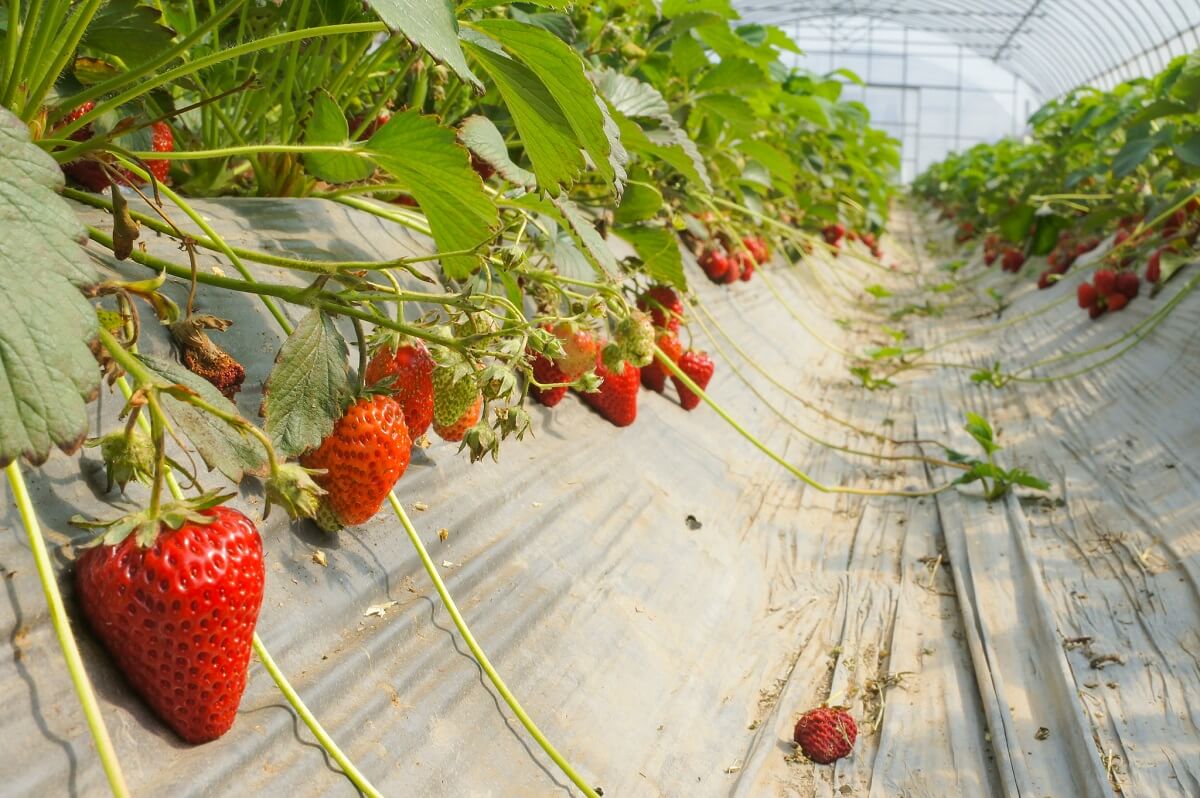
Fruits can be grown in greenhouses just like many vegetable crops. One of the most successful fruits grown in greenhouses is the strawberry. Strawberry plants perform really well in gutter-style hydroponics systems where they can access ample water and nutrients to produce large yields. The strawberries are also less likely to rot since they are not sitting on the ground.
In a gutter-style hydroponics system, the strawberry fruits hang over the edge of the gutter, making them easy to pick. Look for day-neutral varieties of strawberries like the Albion or Seascape to grow in greenhouses.
Squash
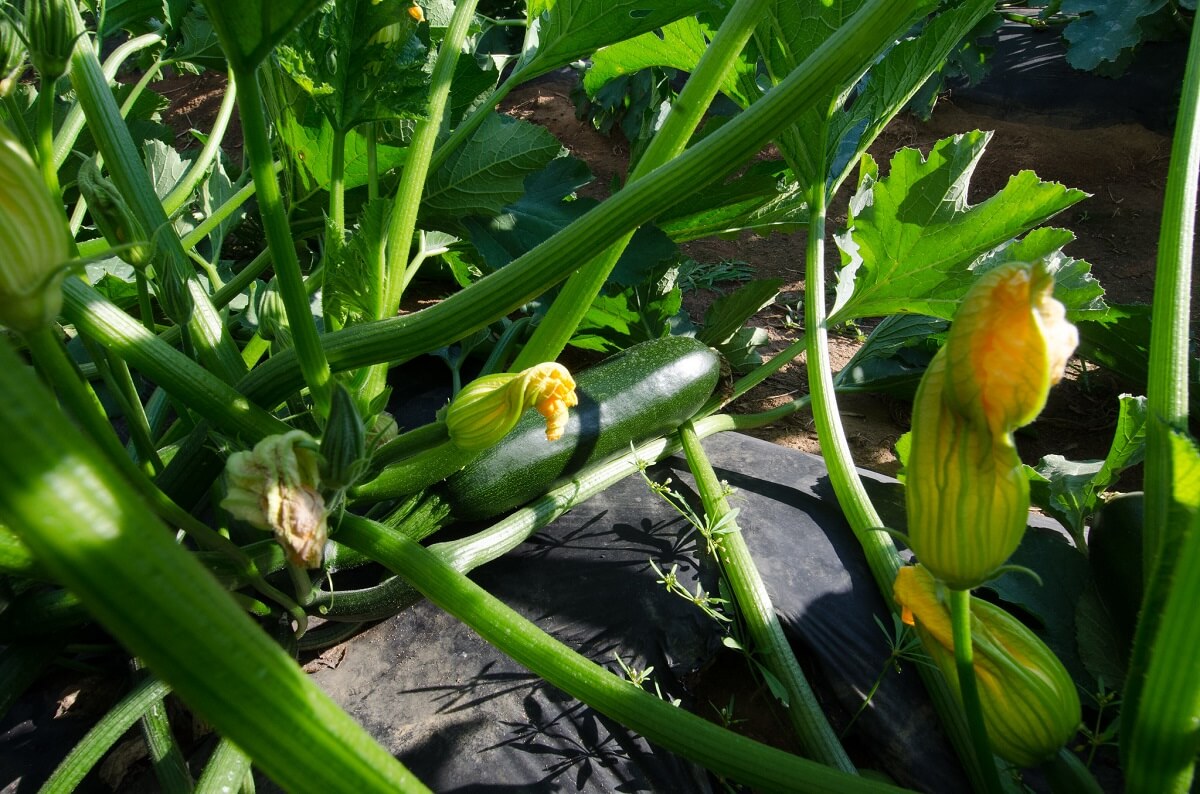
Squash are similar plants to cucumbers, so it may not be a surprise to see them on this list. Many squash plants are vining and can be grown in a greenhouse if supported on a trellis. Squash crops are heavy feeders and require lots of nutrients. Growing them in a greenhouse is an excellent way to make sure that you get the complete yield for your squash plant.
Zucchini squash are commonly grown in greenhouses. A Partenon is an ideal cultivar for greenhouse growing. Many growers have successfully grown acorn, butternut, yellow, and spaghetti squash as greenhouse plants.
Eggplant

Eggplants are grown all over the world and are a robust and diverse crop. Eggplants are heavy feeders and require lots of fertilizer to produce high yields of fruit. They can also become top-heavy which makes them prone to collapsing in the field.
When grown as greenhouse plants, it’s easier to provide eggplants the nutrients and structure that they need to grow well. Italian cultivars grow well in greenhouses. If you want to get adventurous, try the Aretussa or Angela cultivars for a pop of unique color.
Flowers
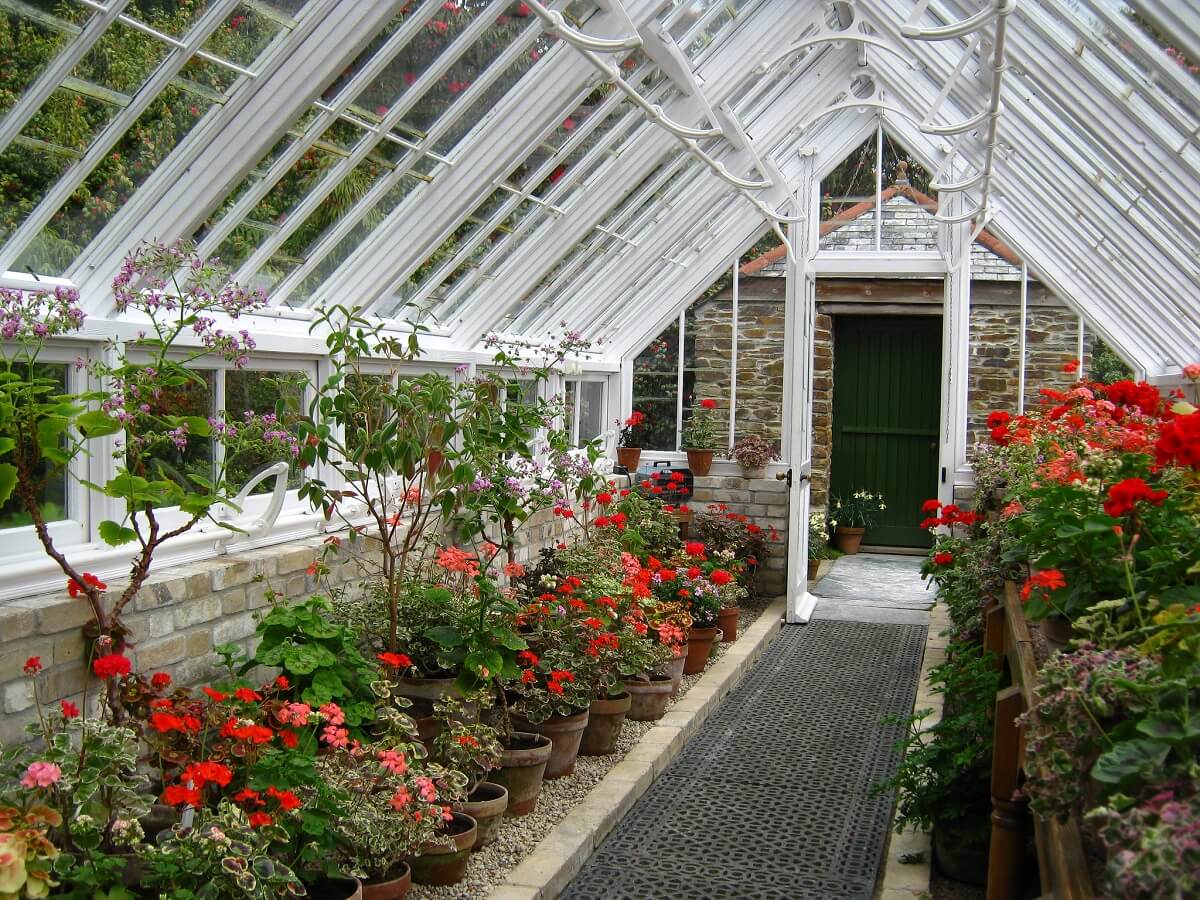
The list wouldn’t be complete without mentioning that flowers can be grown in greenhouses. Many cut flowers and bedding plant producers start their greenhouse plants in containers and trays. It’s possible to grow flowering plants in hydroponics systems also, though that’s a less common practice. You might be surprised to know that even rose bushes can be coaxed into growing in hydroponic systems.
Cut flowers like sunflowers, snapdragons, lisianthus, dianthus, sweet peas, and milkweeds (Asclepias) all grow really well in greenhouses. If you plan on growing chrysanthemums, a greenhouse operation is a perfect way to start them.
What are your favorite greenhouse plants? And why do you choose to garden in a greenhouse? Let us know in the comments below!









































Thanks for sharing this. I will try this.